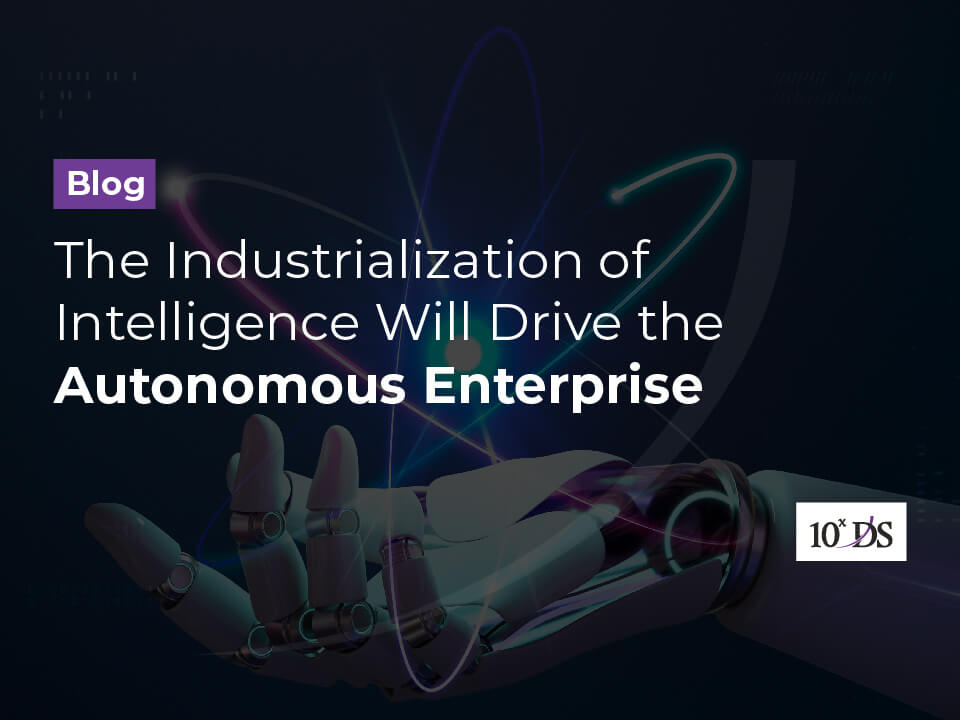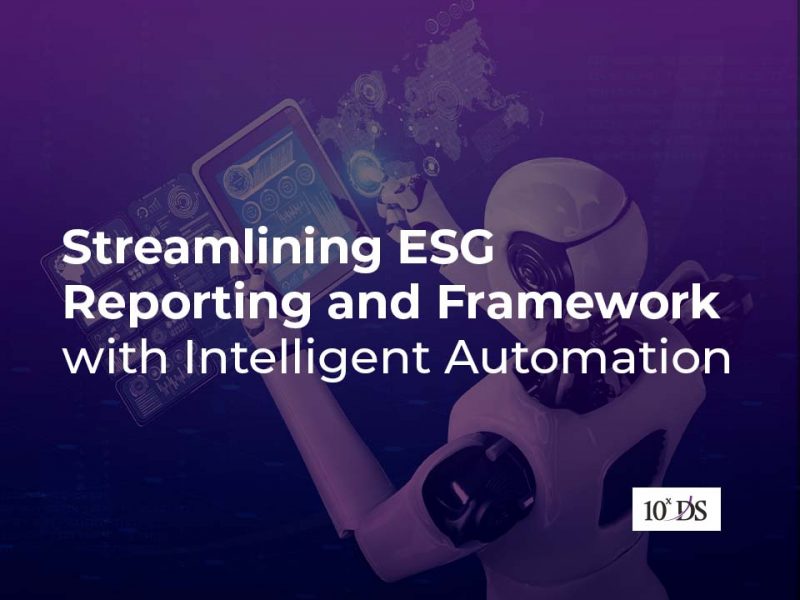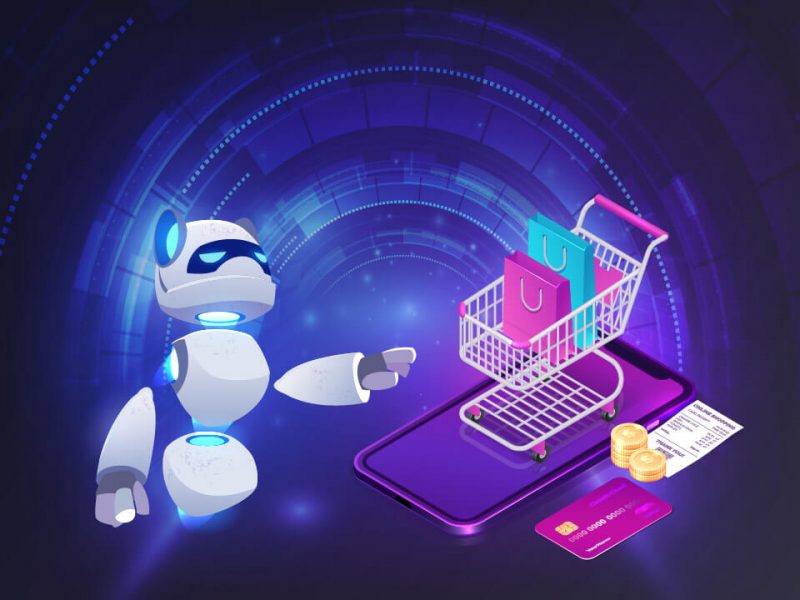
The Industrialization of Intelligence Will Drive the Autonomous Enterprise
The COVID-19 pandemic affected almost everyone in the world. It left the world in peril for almost two years. But it was also a period where many new concepts and revolutionary changes happened. There was a paradigm shift in technology adoption and sociocultural change, adjusting to the new norm. This shift gave the biggest impetus to the industrialization of intelligence which in turn increased the momentum and accelerated the adoption of automated systems in enterprise systems and processes. Had the pandemic not triggered such changes fast-forwarding the technological advancements, we would still have been a few years back in time.
How will Industrialization of Intelligence Reflect in Our Times?
One of the biggest changes that the industrialization of intelligence will bring forth is the way companies, organizations or government departments will work in the coming years. The introduction of automated systems will replace human intervention in a series of operations.
Many tasks of repeated nature that human beings are required to handle at the moment will be effectively done by automated systems. The new developments also forecast that the future will feature automated systems playing crucial roles in decisive processes and effect the arrival of automated enterprises.
According to some experts, the changes that the world will witness in the coming years as a result of the industrialization of intelligence will be equivalent to the same that was brought about by the industrialization of machines a century ago. That was quite revolutionary and changed the way the entire humanity behaved until then. In fact, it was the catalyst for the creation of new world order and modern civilization.
One ideal example of how automated systems brought evolutionary change to the conventional human handling of tasks occurred during the pandemic period. Many airline companies across the world experienced an unprecedented number of ticket cancellations due to lockdowns and travel bans.
A major company addressed the issue by investing in developing an RPA bot to process this colossal number of cancellation requests. In the ensuing months, the company kept improvising the capacity of bots. It appears that now the bots can process as much cancellation requests or more on a single day compared to what the enterprise was handling in the pre-pandemic period. In addition to that, the company could improve the way its customer support desk operates now.
Technologies such as hyperautomation, Intelligent Automation, Artificial Intelligence, Conversational artificial intelligence (AI), and advanced analytics, among others can help businesses gain more agility even in difficult times. These technologies have the potential to improve service availability, filling the staff gap during and after the crisis, minimizing costs, increasing efficiency and enhancing accuracy.
For instance, virtual agents can automate IT helpdesk, customer service, some HR processes and others. Such chatbots can verify the identity of the requestor, identify, and resolve the issues, queries and then update the resolution to the requester without any manual intervention.
The fast-paced digital transformation and the industrialization of it cannot be taken for granted either. Should these new developments be in the best interest of the organizations, we need to take into account a few significant factors.
1. Every new development Is a foundation for the next
For starters, let’s just take the pandemic as an example. Over these two years, the world experienced multiple waves of it and each of them was ensued by lockdown measures. Organizations improvised their resources to operate smoothly in the toughest periods. The Digital transformation that took place during each phase was acting as the foundation for new waves of change. Organizations adopted different methods to keep up with the fast-paced evolution. Some invested in developing their platforms while others outsourced them. In either case, they sought to enhance the efficiency of the processes after doing away with less effective ones in use.
2. Ignoring the benefits of the previous Digital Transformation makes future adoptions harder
If businesses have not made use of any of the benefits that the previous waves of digital transformation offered, it would be harder for you to fully utilize the benefits of the new waves and environments. Although each new wave of changes will bring in radical changes in the structure, environment, and process, the fundamental or underlying concepts remain the same. Whether you are a start-up or an established brand, it is high time you thought of investing in innovative digital assets or embracing a digital-first approach.
3. Creativity plays a big role
Organizations that have benefited the most from digital adoption are the most creative ones. Take for instance the case of the airline company that invested in bots to process ticket cancellation requests. While other companies rode on conventional practices, this particular one was creative to believe in something innovative and thus achieving operational efficiency and process excellence.
4. Adaptiveness is the key to success
When the latest state-of-the-art solutions are introduced, organizations need to invest in adopting them or willing to adapt to them. Any organization that is not adaptive will trail behind in the competition. Organizations that are more agile create innovative operating and business models that integrate business, process, operations, and technology to function seamlessly. Their ecosystem makes better use of technology to connect and cater to every touchpoint in the customer journey, from onboarding to successful project delivery, ensuring they meet and exceed customer expectations.
5. Resilience is a major attribute
Resilience is the ability of an organization to recover from a setback of any kind – be it financial or technological or business-related, and run back on the track. This is a key attribute for an enterprise that wants to be autonomous in making use of digital transformation.
Conclusion
The future world order is going to be that of numerous new waves of technological and digital modernization and transformations. Organizations that want to ride on these and maximize their productivity should have a system in place that enjoys and shows all the aforementioned characteristics. Your journey towards becoming an autonomous digital enterprise will require detailed planning and a clear roadmap to leverage emerging technologies like intelligent automation, hyperautomation, AI/ML capabilities, advanced analytics, among others. Moreover, to become an autonomous digital enterprise, organizations would value agility and customer-centricity, and use insights gleaned from data across the organization to scale further, become resilient, and reliable.
How 10xDS can help?
10xDS has the advanced know-how, expertise, and experience delivering automation solutions to enterprises worldwide across industries by leveraging Intelligent Automation, AI, ML, Analytics, and other emerging technologies. We have state-of-the-art technology CoEs, flexible solution deployment methodologies, and a full suite of offerings and services for every stage of an organization’s path to becoming an Autonomous Digital Enterprise.
Aiming to become a growth-oriented enterprise?
Then talk to our experts to gear up to become an Autonomous Digital Enterprise


